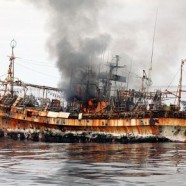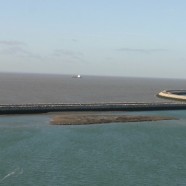Crabs Pinched by PCB
The port of Rouen wants to open a new disposal site for the sludge from dredging in the Seine’s bay. The public inquiry was closed yesterday. This 2 million meters³ “experience” covers itself in scientific fuss like the follow-up of the bioaccumulation of toxic elements contained in the sludge, thanks to the placing of 7 cages of mussels laid 2 to 10 km from the disposal site. This animal experimentation led by Ifremer is totally useless in regards to the ecological disaster that strikes a blow from heavy metals and PCB, endocrinal disruptors, at the ensemble of the Seine’s bay from the east to the west and from the top to the bottom.
(Français) Pour une nouvelle enquête publique sur le dragage et l’immersion des boues de la BSM
Protected Marine Areas at Risk from Dredging Muds
Conferences, symposiums, chitchat and roundtables… So far, Protected Marine Areas are large spaces in which everyone wants to protect what they hold most dearly, aka, their own interests, even when those are as murky as dredging muds. The road to bringing reason to the active minorities, who are often polluting the most, is still long.
La Rochelle is, in this regard, quite edifying. As part of the extension and deepening of the pleasure-boating port of Minimes – for the benefit of trimarans, catamarans and monohulls, 1 million m3 of radioactive sludge and other pollutants must be extracted from the access channel to the old port by October 2011, and these extractions will be scattered at sea around the Pertuis Charentais Natura 2000 site. This 456,000 hectare area is described as one of the most productive marine ecosystems within the French waters, and several endangered species such as sturgeon, shad, and porpoises reside there. It is also an important economic resource for the professional fishermen, who, thanks to diversified techniques, supply auction and regional markets. Oyster ponds on the islands of Ré and Marennes-Oléron are labeled as part of the Pertuis Charentais.












